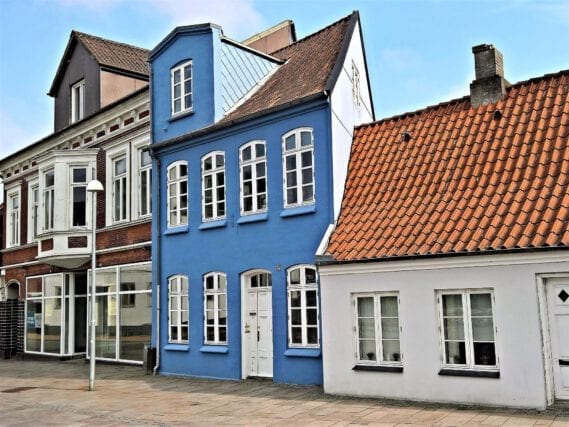Facades - There are many types of exterior plaster on the market. The construction of a facade in Norway requires the use of appropriate materials. The prevailing climate here is conducive to fouling and the formation of dirt. Therefore, it is recommended to use dedicated plasters to prevent this.
The article is available for companies as sponsored
What about the facade in Norway?
The atmospheric conditions in Norway are not those that favor the durability of the façade. Therefore, it is recommended to use the highest quality plasters that will perfectly cope with the local weather. First of all, it is worth paying attention to the fact whether the building materials used for the external wall are resistant to moss growth and the formation of dirt. An equally important parameter is also vapor permeability, which allows it to "breathe".
Silicone plasters
Silicone plaster in which silicone resin is used as a binder. It is considered the most universal material, combining the advantages of mineral, acrylic and silicate plasters. It is determined by its performance parameters.
Hydrophobic but vapor-permeable
This type of material is hydrophobic. This means that the water does not soak into its structure, but flows down the wall surface. However, this does not limit its vapor permeability. Such a facade still has the ability to release moisture from inside the house to the outside.
Resistant to dirt and fungi
Due to the fact that water does not soak into the plaster structure but flows down its surface, such a wall is resistant to dirt. All the dirt from the facade flows away with the water. Additionally, manufacturers of such materials use biologically active substances. They prevent the growth of moss and algae, as well as the development of fungi and mold. In context In Norway this is especially important parameter.
Flexible and resistant to damage
The high elasticity of silicone plaster prevents it from cracking as a result of the deposition of a new home, the occurrence of high temperature differences or any mistakes made. Additionally, its binders are hard, which makes it resistant to mechanical damage.
It undergoes staining
Due to its structure, silicone plaster is easy to color. Thanks to this, the customer can choose from a wide range of colors. For the less decisive, however, this may turn out to be a disadvantage - too much choice may extend the decision on the color of the facade.
Silicate-silicone plasters
The functional properties of silicate-silicone plasters are very similar to those of silicone plasters. In terms of structure, silicate-silicone plasters have not only resin but also silicate binders, which increases their performance parameters.
Facades Differences between plasters
Silicate-silicone plasters and their silicone counterparts have similar features in terms of coloring and resistance to mechanical damage. This is due to the fact that they have similar binders in their structure, which determine their parameters in this respect.
It is worth emphasizing, however, that although silicate-silicone plasters have vapor-permeable properties, they are lower than in the case of silicone plasters. Therefore, it is not recommended to use them in places with increased humidity. They are also more susceptible to soaking up with water, which makes them more often and faster overgrown with algae and fungi.
They are also distinguished by the fact that silicate-silicone plasters have a higher resistance to dirt. Due to the use of silicate binders, they have lower thermoplasticity. In practice, this means lower viscosity of the facade after heating, which prevents dust particles from penetrating into it.
Do these plasters can be put on glass wool?
The common feature of both types of plaster is also the fact that they can be used on walls insulated with glass wool. This type of facade finish is characterized by vapor permeability, which prevents water condensation on the insulated layer. It is worth remembering that glass wool loses its properties when it gets wet.
Facades Which plaster to choose?
Considering the similar properties of both plasters, it is difficult to make the right decision. It will depend to a large extent on the specifics of the project. That is why it is worth relying on the opinion of experts in this field.




